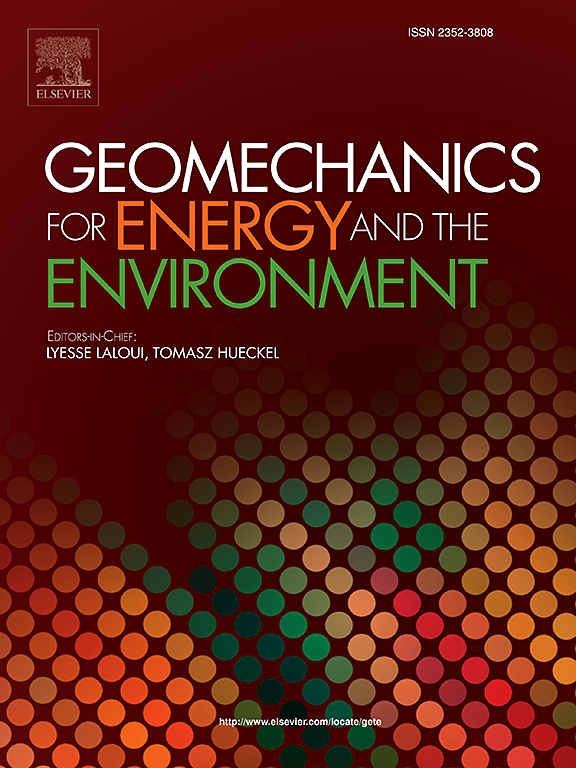In situ static elastic properties assessment and validation with pressuremeter testing using a formation tester tool
IF 3.3
2区 工程技术
Q3 ENERGY & FUELS
引用次数: 0
Abstract
Pressuremeter testing (PMT) is a formation test that consists of inflating a cylindrical packer inside a borehole while measuring the radial deformation or injected fluid volume as a function of packer pressure. Provided that the stiffness of the packer measuring system is known and large enough compared to that of the formation, changes in packer pressure associated with changes in injected fluid volume provide a direct measurement of formation stiffness. In turn, the in situ static shear modulus is obtained from the formation stiffness at a length scale similar to that of the packer. Here, we report on the first field-scale campaign of PMTs in deep boreholes performed using a wireline formation tester (WFT) tool. We carried out PMT measurements as part of the characterization and appraisal of potential sites for a deep geological repository for radioactive waste in Switzerland. We performed multiple PMT inflation cycles to infer in situ static shear moduli at six stations spread across four boreholes. PMT-derived static shear moduli results were consistent with static shear moduli derived from sonic logs using independent dynamic-to-static elastic moduli transformations. PMT-derived static shear moduli and laboratory-derived static elastic moduli using samples from coring performed at the depths of the PMT stations were consistent, with slightly lower laboratory values. Furthermore, we report dynamic-to-static shear moduli transformations by using laboratory-scale data obtained on cores and field-scale derived from sonic logs and PMT. We observed differences between static and dynamic shear moduli derived from laboratory scale using cores and field scale using sonic logs and PMT. We report linear trend slopes of about 0.5 for the laboratory data and 0.7 for the field data. These first results show the viability of in situ PMT in deep boreholes with a WFT tool, as it can be performed at multiple depths in a single run, in a time-efficient manner, and in combination with micro-hydraulic and sleeve fracturing stress tests for an integral approach to in situ geomechanical assessment.
求助全文
约1分钟内获得全文
求助全文
来源期刊

Geomechanics for Energy and the Environment
Earth and Planetary Sciences-Geotechnical Engineering and Engineering Geology
CiteScore
5.90
自引率
11.80%
发文量
87
期刊介绍:
The aim of the Journal is to publish research results of the highest quality and of lasting importance on the subject of geomechanics, with the focus on applications to geological energy production and storage, and the interaction of soils and rocks with the natural and engineered environment. Special attention is given to concepts and developments of new energy geotechnologies that comprise intrinsic mechanisms protecting the environment against a potential engineering induced damage, hence warranting sustainable usage of energy resources.
The scope of the journal is broad, including fundamental concepts in geomechanics and mechanics of porous media, the experiments and analysis of novel phenomena and applications. Of special interest are issues resulting from coupling of particular physics, chemistry and biology of external forcings, as well as of pore fluid/gas and minerals to the solid mechanics of the medium skeleton and pore fluid mechanics. The multi-scale and inter-scale interactions between the phenomena and the behavior representations are also of particular interest. Contributions to general theoretical approach to these issues, but of potential reference to geomechanics in its context of energy and the environment are also most welcome.
 求助内容:
求助内容: 应助结果提醒方式:
应助结果提醒方式:


